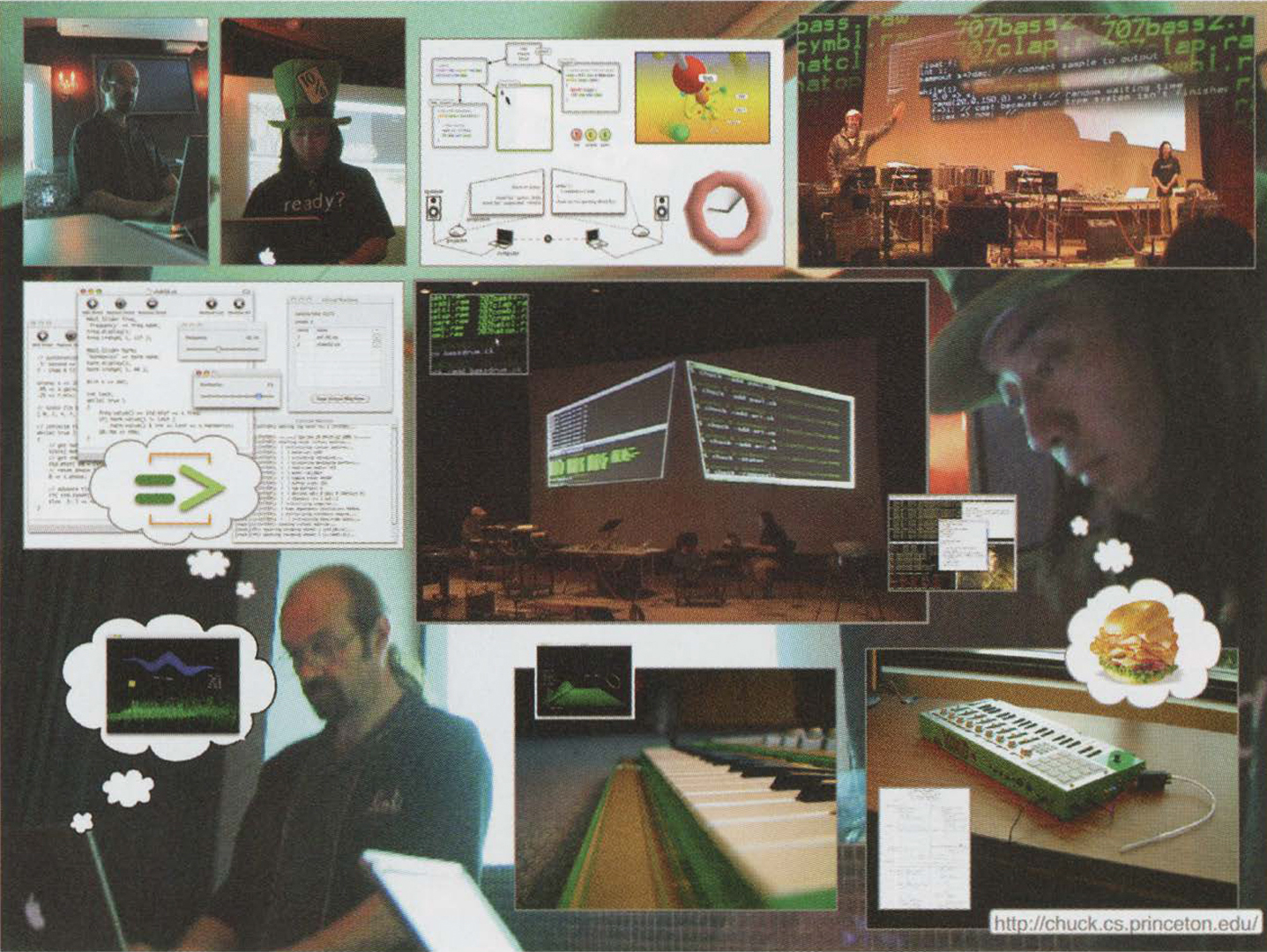Ge Wang, Perry R. Cook: On-the-fly Counterpoint
Artist(s):
Title:
- On-the-fly Counterpoint
Exhibition:
Medium:
- Interactive performance, real-time sound, music, and graphics
Category:
Artist Statement:
The performance centers around two new interfaces for musical expression: the Voice-Oriented Melodica Interface Device (VOMID) and the technique and aesthestics of writing code “on-the-fly” to generate sound, music, and visuals.
The VOMID is a massively modified Korg MicroKontrol device, now augmented with sensors for continuous pitch transition, breath sensors, formant control interfaces, and controls that can be mapped to various speech and singing synthesis parameters.
In On-the-fly programming, audience members observe the entire process (via projection and sound). They watch the performers write code, and experience the sound, music, and graphics as they evolve. While the observers/listeners may not understand all the specifics of the code, the various on-screen changes can be construed as “gestures” for which there are musical or sonic consequences. On-the-fly programming seeks to reveal the intentions and modus operandi of the performers at every stage in the process. Each performance can (and does) differ drastically from another.
Technical Information:
On-the-fly Counterpoint is constructed piece-by-piece in real time, using the facets of concurrent audio programming and on-the-fly programming in ChucK. Contrapuntal simultaneities can be separated and compartmentalized into autonomous, concurrent entities. This is part of the authors’ ongoing investigation into using code as an interactive and expressive musical instrument.
The VOMID is suspended by a neck strap on the chest and played somewhat like an accordion. Thanks to Korg, the VOMID sports a 37-note keyboard, 16 programmable touch-sensitive buttons, a joystick, eight rotary pots, and eight slide pots (all programmable). Custom additions to the base controls include a breath-pressure sensor, sensitive to both blowing and sucking. It is mapped to phonation (singing) when blown and breathing sounds when sucked. A linear FSR is located along side the top two octaves of the keyboard and is mapped to continuous pitch control, directly related to the discrete pitches of the keyboard. Finally, inside the VOMID, there is a three-axis accelerometer, which is sensitive to leaning and shaking. The sounds are synthesized and mapped using the ChucK programming language.





